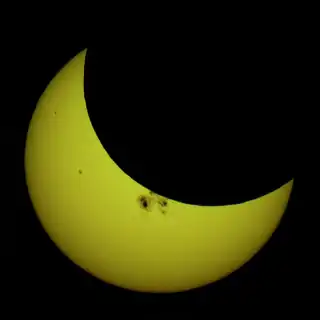| Solar eclipse of August 9, 1953 | |
|---|---|
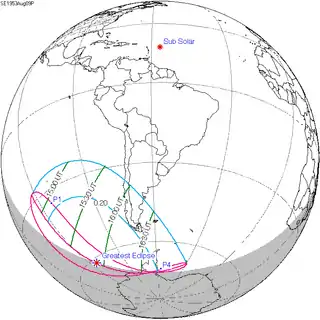 Map | |
| Type of eclipse | |
| Nature | Partial |
| Gamma | −1.344 |
| Magnitude | 0.3729 |
| Maximum eclipse | |
| Coordinates | 62°12′S 114°42′W / 62.2°S 114.7°W |
| Times (UTC) | |
| Greatest eclipse | 15:55:03 |
| References | |
| Saros | 154 (3 of 71) |
| Catalog # (SE5000) | 9405 |
A partial solar eclipse occurred on August 9, 1953. A solar eclipse occurs when the Moon passes between Earth and the Sun, thereby totally or partly obscuring the image of the Sun for a viewer on Earth. A partial solar eclipse occurs in the polar regions of the Earth when the center of the Moon's shadow misses the Earth.
Related eclipses
Solar eclipses of 1950–1953
This eclipse is a member of a semester series. An eclipse in a semester series of solar eclipses repeats approximately every 177 days and 4 hours (a semester) at alternating nodes of the Moon's orbit.[1]
| Solar eclipse series sets from 1950–1953 | ||||||
|---|---|---|---|---|---|---|
| Ascending node | Descending node | |||||
| Saros | Map | Saros | Map | |||
| 119 | 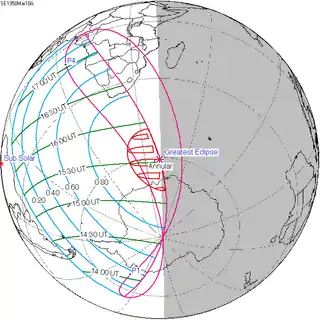 1950 March 18 Annular (non-central) |
124 | 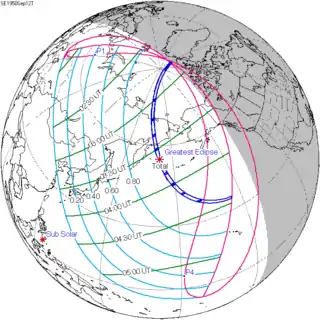 1950 September 12 Total | |||
| 129 |  1951 March 7 Annular |
134 | 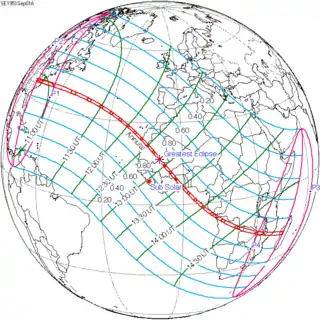 1951 September 1 Annular | |||
| 139 | 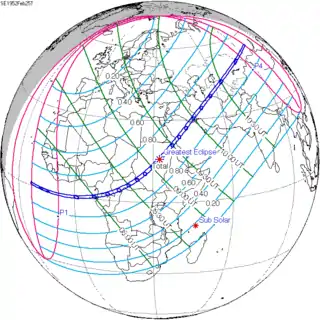 1952 February 25 Total |
144 |  1952 August 20 Annular | |||
| 149 | 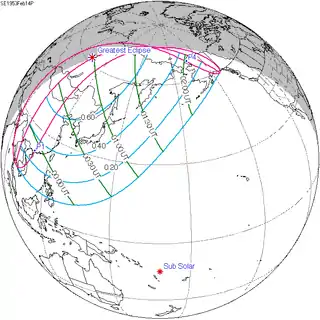 1953 February 14 Partial |
154 |  1953 August 9 Partial | |||
| Solar eclipse of July 11, 1953 belongs to the next lunar year set | ||||||
References
- ↑ van Gent, R.H. "Solar- and Lunar-Eclipse Predictions from Antiquity to the Present". A Catalogue of Eclipse Cycles. Utrecht University. Retrieved 6 October 2018.
External links
This article is issued from Wikipedia. The text is licensed under Creative Commons - Attribution - Sharealike. Additional terms may apply for the media files.
.jpg.webp)

